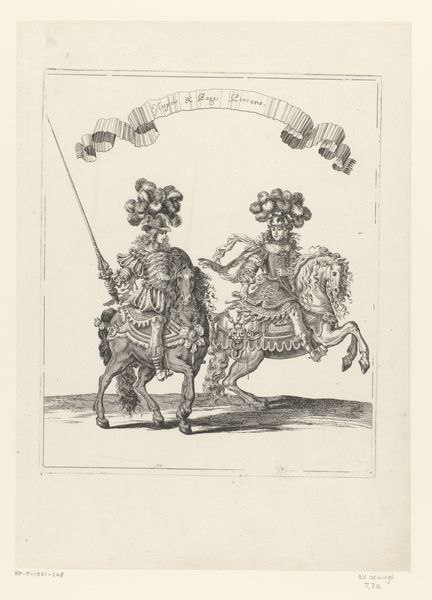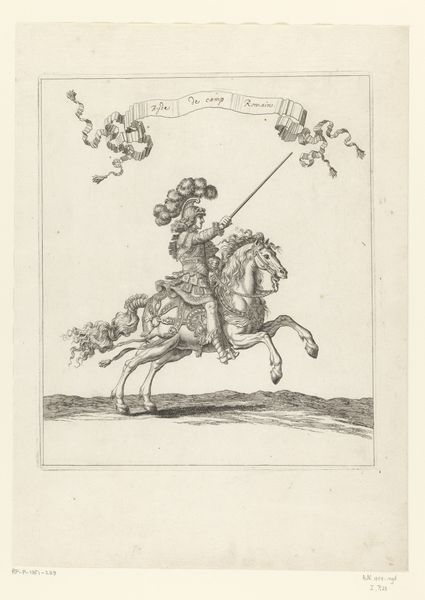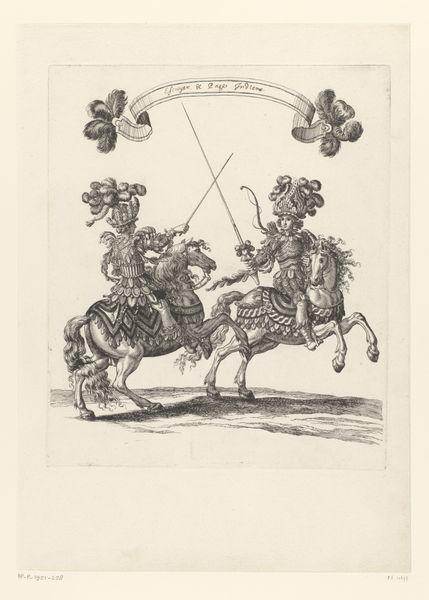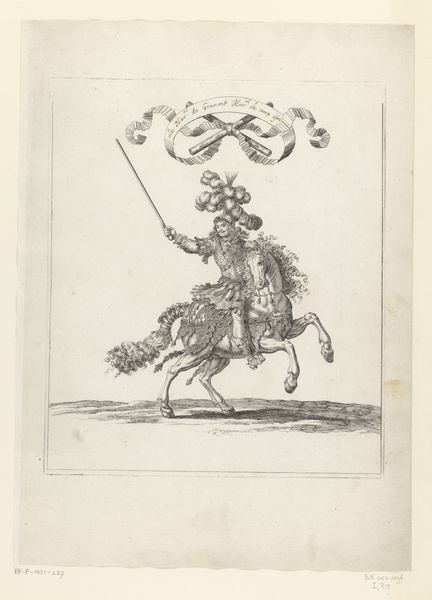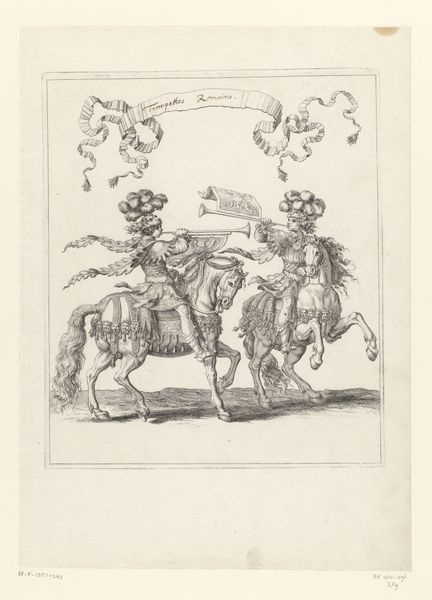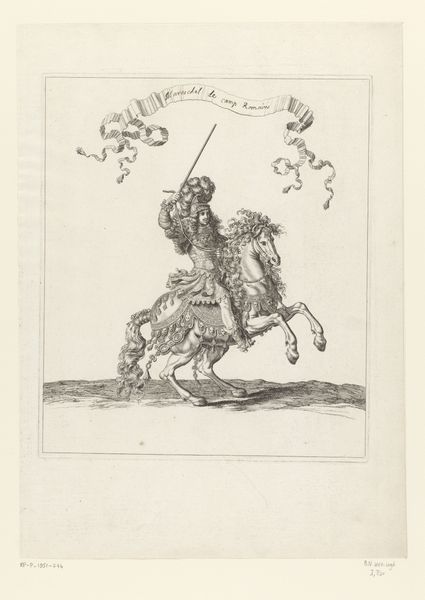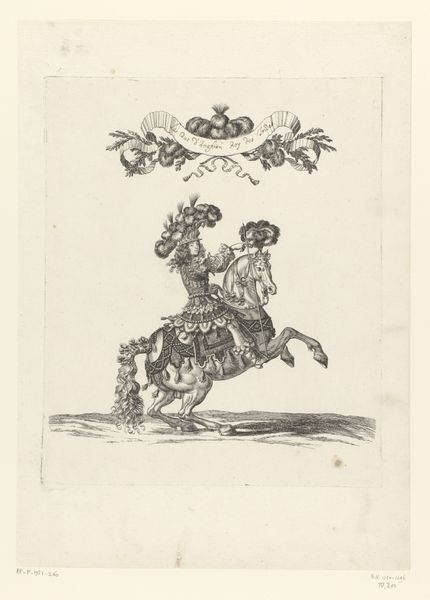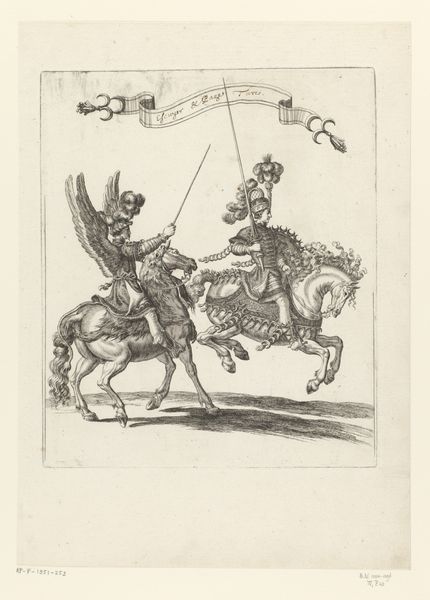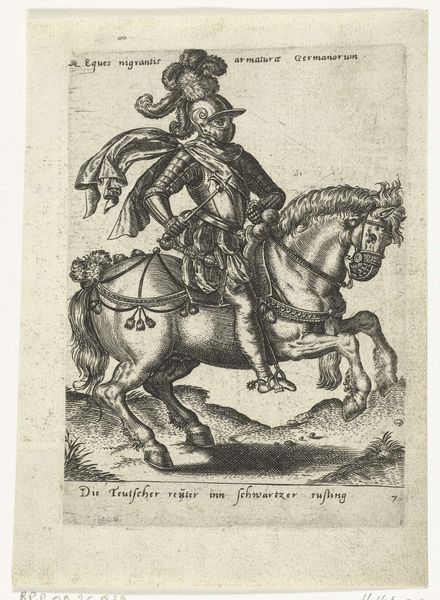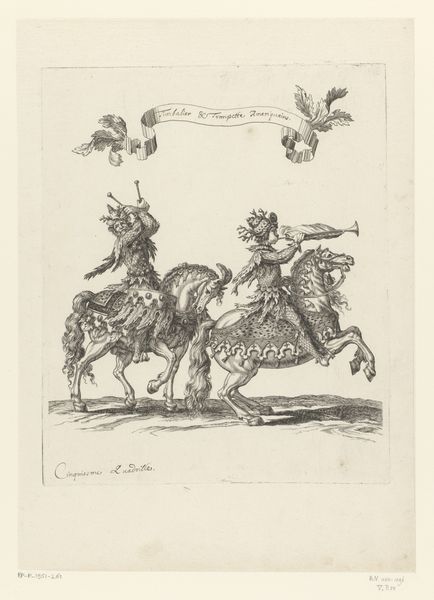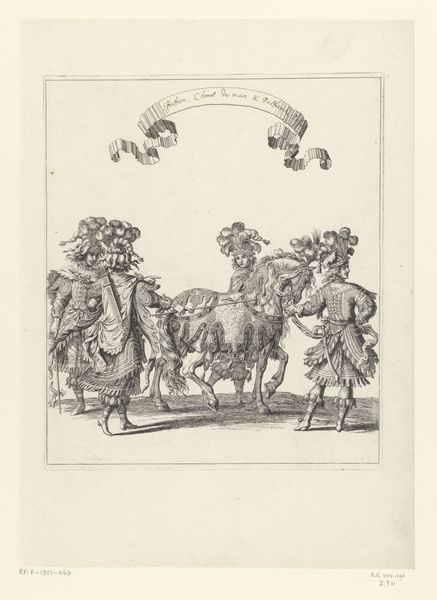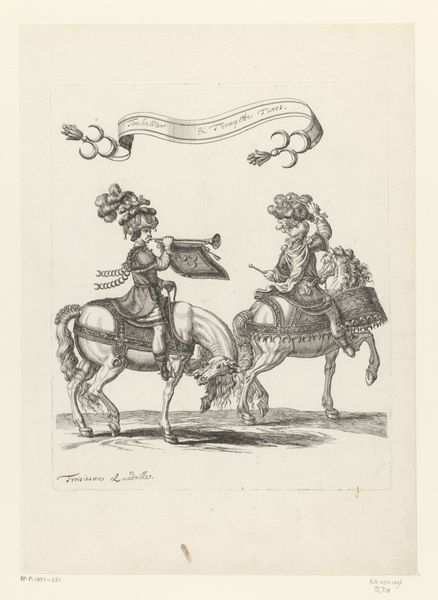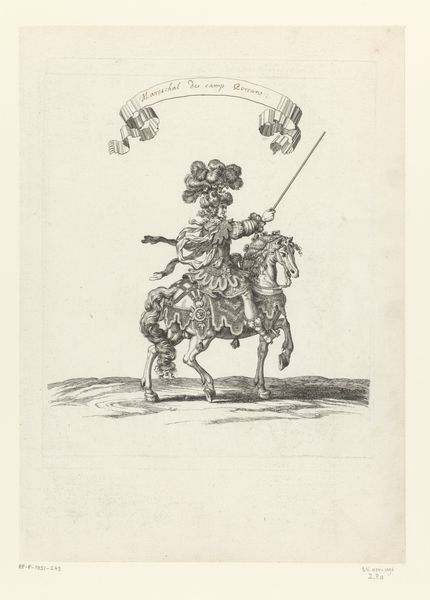
Aanvoerder te paard in fantasiekostuum, aangeduid als 'Indien' 1670
0:00
0:00
drawing, print, ink, engraving
#
drawing
#
baroque
# print
#
figuration
#
ink
#
engraving
Dimensions: height 315 mm, width 261 mm
Copyright: Rijks Museum: Open Domain
Curator: What a remarkable print. This is François Chauveau’s "Aanvoerder te paard in fantasiekostuum, aangeduid als 'Indien'", dating to about 1670. Editor: It’s striking how the fine lines create so much texture, especially in the elaborate costume. It looks incredibly theatrical! I’m curious about the choice of ‘Indian’ as a title – it reads a bit… reductive to me. Curator: The title indeed points to the symbolic language of the Baroque period, when non-European cultures were often filtered through European fantasy and projection. This "Indian" leader is an imagined figure, meant to embody exoticism. It says much about Europe’s expanding world view at the time. Editor: I agree. Thinking about the production process here – engraving is labour-intensive and requires incredible skill. What kind of patronage or social function would a print like this have had? Was it intended as purely decorative or part of some wider propagandistic effort? Curator: It likely served both decorative and representational purposes. Prints were relatively accessible, making them an ideal means to circulate imagery among a broad audience. Also, consider how Louis XIV deployed spectacle and theatre to promote the French court. This sort of image could have easily tied into broader strategies of royal image-making and the establishment of power. Editor: So, the “Indian” costume could also function as a kind of luxury textile performance. Feathers and elaborate adornment – all these visually impressive details serve to establish the exotic and affirm the wealth of the patron through skilled handiwork reflected back onto a royal symbol. Curator: Precisely. What looks like simple decoration performs work here – signifying status, power, and knowledge of a wider world, brought back for display in the heart of Europe. The act of artistic interpretation also carries immense cultural weight, particularly during times of expansion. Editor: Examining this work today serves as a poignant lesson then, because we are prompted to consider how much of its context lies embedded in the social and material processes that generated such imagery and their influence today. Curator: I think reflecting on the socio-political power of such images opens new conversations about global narratives of identity, especially within museums.
Comments
No comments
Be the first to comment and join the conversation on the ultimate creative platform.
